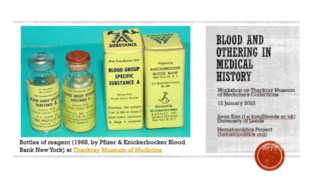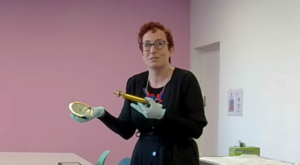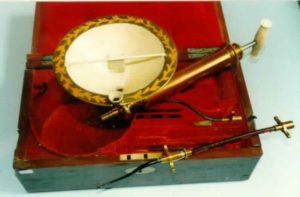Whilst we are still winding down from the excitement of our recent International Symposium: ‘The Politics of Blood, Body and Health’, we have yet to take the time to reflect on the success of our event much earlier in the year, held in collaboration with Thackray Museum of Medicine. Initially set to take place within the beautiful and stimulating setting of the Museum, with its vast physical collection of over 70,000 pieces of history relating to medicine and healthcare, Covid meant we had to adapt to an online setting. Despite this, we were still able to host some excellent presentations and discussion.

Opening with the Hematopolitics Project PI Dr. Jieun Kim’s research looking at the quest for ‘pure blood’ in blood donation. The presentation first reflected on the symbolic role of blood within Japanese and Korean history, making connections to modern attitudes towards blood, and the implications for blood donation practices.
Dr. Ros Williams then presented their research on blood stem cells, considering ‘material infrastructures’ racialised rarity’.
https://scholar.google.co.uk/citations?user=V5EcRmgAAAAJ&hl=en
The presentation detailed how active targeting of underrepresented stem cell blood types takes place in UK maternity wards, specifically in target areas known for high concentrations of ethnic minority communities. It was interesting to learn how the healthcare messaging around this placed the burden of securing a vital healthcare resource – stem cell blood – on the shoulders of ethnic minority women.
The penultimate presentation came from Dr. Sangeeta Chattoo, ‘Metaphors and Materialities of Blood: Migrants, Mutant Genes and the Contagious’.
https://www.york.ac.uk/healthsciences/our-staff/sangeeta-chattoo/
It included a thorough dissection of how genetic disorders like sickle-cell anemia and thalassaemia came to be mapped on to marginalised ethnic groups (race/tribe/caste) in the post-WWII global health regime. Now genes have overtaken infectious diseases in global imaginations of ‘contagious (immigrant) communities’, giving rise to rhetorics framing inherited blood disorders as ‘genetically determined time bomb’, which is preventable through genetic screening.
Finally, members of the Thackray team gave us some insights into their work, and some of the key questions faced when trying to catalogue and preserve such a large collection. We were treated to a look at some of the items in their collection, including transfusion kits which were recognisably similar to their modern counterparts, alongside less recognisable ornate bleeding bowls.
https://collections.thackraymuseum.co.uk/object-2008-0547
https://collections.thackraymuseum.co.uk/object-321028
It was at this point many attendees expressed their regret at not being able to be physically present to inspect these delicate and beautiful pieces of history. Rather than feeling frustrating, this was a great way to close the workshop as it left many with a sense of anticipation for future collaborations.

